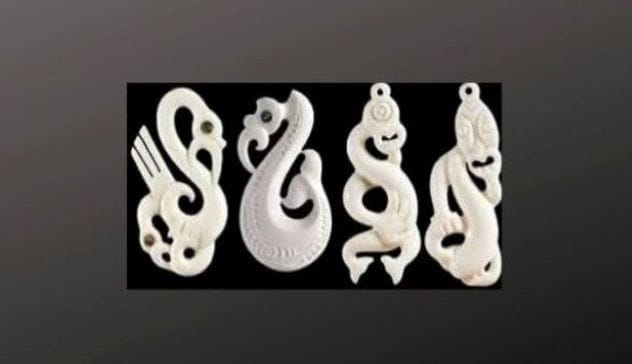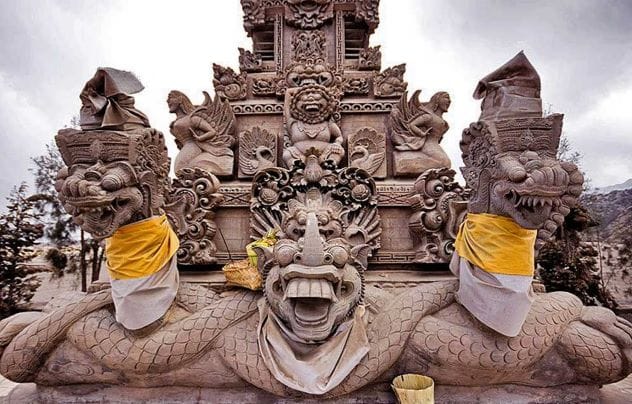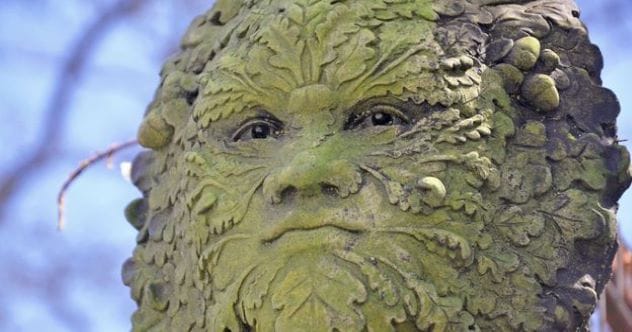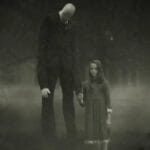Even though we live in a world full of screens and new technology, it’s easy to forget how old our planet really is. We might feel like we’re in a brand-new digital age, but history is all around us. If you look closely, you’ll find clues from past times. You might see strange carvings on old buildings, unique costumes at festivals, or hear fascinating stories with mysterious characters. These are the folk symbols of our cultures, and they carry deep meanings. Let’s explore some of the most amazing folk symbols from different corners of the world.
10 The Green Man, Britain
In Europe, the Medieval era was a period of big changes. Old empires were fading, and new beliefs like Christianity were growing. Yet, some even older traditions from before Christian times held on strong. In Britain, people kept some of their ancient customs and stories. The Green Man is a perfect example of this.
You can often spot the Green Man in old churches, carved into wood or stone. He’s a face made of leaves, peeking out at visitors. This symbol comes from very old nature-based religions, even before the Romans came to Britain. He represents good luck for harvests and serves as a reminder that we must respect nature. If we turn away from nature, it might become an enemy.
It might seem odd to see such a pagan symbol in a Christian church. But when new ideas take hold, they often bring along some of the old, comforting ones. The people of Britain needed a bit of their past to feel connected. The Green Man, found all over Great Britain, shows that even ancient buildings carry stories from even older times.
9 Potnia Theron, the Mediterranean and Near East
Similar to the Green Man, there’s a figure known as the “Master of Beasts” found across cultures. This image usually shows a man holding wild animals, showing a connection or control over them. However, an even more striking version is the “Potnia Theron,” or the Mistress of Beasts.
The oldest known example of this motif is a clay figurine from 6,000 BC, found in Çatalhöyük, Turkey. It shows a female figure sitting between two lionesses. This powerful image spread across the Mediterranean and the Near East. It might symbolize humanity’s relationship with animals, perhaps representing protection from them or the development of farming and hunting.
The true meaning isn’t fully known, but the Potnia Theron appears in Mycenaean Greek religion, often linked to goddesses like Artemis, the goddess of the hunt, and Cybele. Cybele was a fascinating mother goddess from Asia Minor who became part of the Greek pantheon, known for her unique sect of priests.
8 Nain Rouge, Detroit, Michigan
Let’s jump to a more modern piece of folklore. In Detroit, Michigan, a particular symbol often appears. It’s known as the Nain Rouge, or “Red Dwarf.” This figure can bring a shiver to kids who hear tales of his mischievous acts, but it also inspires joy during the annual Marche du Nain Rouge parade each spring.
This little red imp has been part of Detroit’s culture since it was a French settlement. The legend of the Nain Rouge likely comes from a mix of Norman-French hobgoblin stories, called “lutin,” and local Native American myths about small, tricky spirits. Both traditions describe these beings as troublemakers who bring bad luck.
The spring parade is a fun tradition where people try to chase this symbol of misfortune out of the city for the year. While some local businesses use the image as a quirky mascot, its roots are deep in the city’s history, reflecting a blend of cultures.
7 Onryō, Japan
Sometimes, ancient traditions find new life in modern culture. Japan has a long history of belief in spirits and ghosts, especially those that are malevolent. The idea of seeking revenge for being wronged is a powerful theme in traditional Japanese culture. But what happens if someone can’t get revenge while they’re alive?
According to Japanese folklore, they might become an Onryō – a vengeful ghost. And Japanese tales are full of them! These spirits return to haunt those who harmed them in life.
What’s especially cool is how this folk motif has influenced modern entertainment. Japan is famous for its horror genre, particularly J-Horror films like Ringu (The Ring) and Ju-On (The Grudge). These movies often feature an Onryō as the main scary character – typically a female ghost with long, dark hair and white burial clothes. This look is inspired by how such characters were portrayed in traditional Kabuki theater. The impact of these Japanese ghost stories can be seen in many horror movies made around the world.
6 El Hombre Caiman, Colombia
Many folk symbols come with fascinating stories, even if some details are lost to time. A great example is the legend of El Hombre Caiman, or the “Alligator Man,” from Colombia’s Caribbean coast.
The story is about a young man who loved to secretly watch women bathing in the Magdalena River. He found a hidden spot in the bushes. One day, he got caught. He ran into the forest and met a witch. He asked her for help to hide better so he could keep spying. The witch gave him two potions: one to turn him into an alligator, and another to change him back into a man.
They tested the first potion by the river, and it worked! He became an alligator. But in her excitement, the witch dropped the second potion into the water. It only partly worked, turning his upper body back into a man, but leaving his lower half as an alligator. When he angrily asked the witch to fix it, she refused and cursed him to stay that way forever. It’s such a popular tale that the town of Plato, near the river, even has a large statue of this half-man, half-alligator.
5 Shetani, East Africa and the Island of Zanzibar
In parts of East Africa, like Mozambique, Tanzania, Kenya, and the island of Zanzibar, you can find intriguing carvings of creatures like dog-headed demons, misshapen hags, and strange, surreal elephants. These are known as Shetani, which means “devils.” The word shares roots with the Islamic “Shaitan” and the Christian “Satan.”
These aren’t just old stories or sculptures; many people in East Africa today genuinely believe in the Shetani. For instance, in 2001, there was widespread panic in Zanzibar when locals claimed a bat-winged Shetani called Popo Bawa was attacking people, particularly men. This shows how deeply these beliefs can be held.
There are even cultic practices related to these beings in East Africa. It’s a clear sign that some ancient traditions continue to be a vibrant part of life, not just memories in art or song.
4 Woyo Tribal Masks, Democratic Republic of Congo and Angola
The Woyo people, living on the Atlantic coast of Central Africa, create incredibly expressive masks. These masks are worn during ritual dances by the “ndunga,” a group responsible for maintaining social order and upholding tribal laws. Imagine law enforcers wearing these striking masks while carrying out their duties!
These duties could include tracking down suspected criminals or individuals blamed for misfortunes like droughts, floods, or bad harvests. Each mask is believed to have its own distinct personality, which is often revealed during these ritual dances. The masks are a powerful symbol of authority and tradition within the Woyo community.
3 The Night Hag, Worldwide
Very few stories or figures appear in cultures all over the world, but the “Night Hag” or “Old Hag” is one of them. This is a very curious and, frankly, terrifying character. She is often described as a withered, evil old woman who appears at night, frightening people by pressing down or sitting on their chests, making it hard for them to breathe.
This experience sounds a lot like what scientists call sleep paralysis. But knowing the scientific explanation doesn’t always make it less scary. Different cultures have their own versions of the Night Hag.
In East Asia, some believe Buddhist monks and nuns can project their spirits into dreams to paralyze wicked people. In Brazil, a figure called “Pisadeira” or “She who steps” is said to live on rooftops, ready to descend and stand on the stomachs of those who’ve eaten too much before bed. It’s a chilling concept, no matter where the story comes from.
2 Manaia, New Zealand

If you look at carvings of the Manaia from Maori culture in New Zealand, what do you see? Is it a serpent? A creature with a bird’s head and a human-like body? A person in profile? Or maybe even a dinosaur?
The fascinating thing about the Manaia is that nobody is entirely sure what these mysterious carvings truly represent, even though they appear frequently in traditional Maori art. The word “manaia” itself doesn’t give a clear answer. In a Maori dictionary, its meaning can range from “a grotesque beaked figure,” “ornamental work,” “a lizard,” to “the sea-horse,” or even “a raft.”
In other Polynesian languages, similar words mean “embellishment” or “decoration.” So, are these carvings just decorative fillers for spaces on lintels and pillars? It seems unlikely, given how distinct and common the style is. Whatever the original meaning was, it has largely been forgotten over time. Still, these carvings are undeniably striking and look awesome.
1 Bhoma, Bali

We began this list with the European Green Man and the Mediterranean’s Potnia Theron. On the island of Bali, in Indonesia, you’ll find a figure that shares some similarities. The Bhoma often decorates temples and other buildings, symbolizing themes related to humanity’s connection with the natural world. But there’s a key difference: the Bhoma looks incredibly powerful and impressive!
In Balinese Hindu tradition, Bhoma is considered the son of Vishnu (a major god) and Pertiwi (the earth goddess). He is a kind of nature spirit, often called the “King of the Jungle.” Bhoma is also seen as a guardian spirit, protecting sacred forests, especially those at the base of holy mountains.
With his fierce appearance, often featuring wide eyes, fangs, and elaborate foliage, Bhoma does an excellent job of looking like a formidable protector. You certainly wouldn’t want to get on his bad side!
These folk symbols from around the world are more than just old pictures or stories. They are windows into how different cultures have understood life, nature, and the unknown. From protective spirits to mischievous imps, each symbol tells a unique tale about the people who created it. They remind us that even in our modern age, the echoes of ancient beliefs and artistic expressions continue to enrich our world, showing both our diversity and our shared human experiences.
What are some fascinating folk symbols from your culture? Share your thoughts and stories in the comments below!










